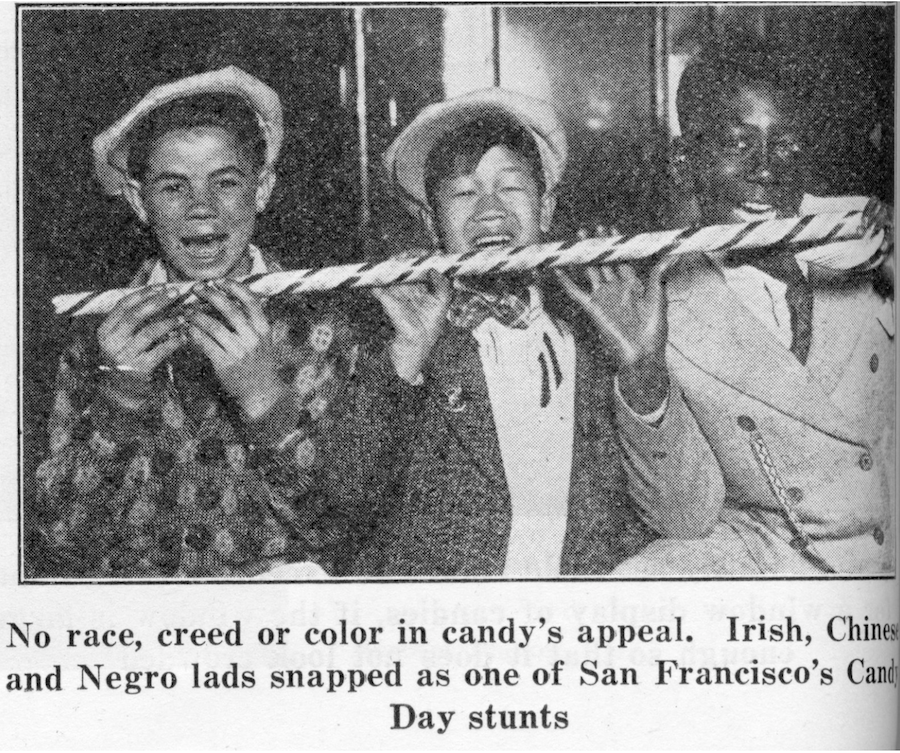Tainted Treats: Racism And The Rise Of Big Candy

Candy corn is as ubiquitous at Halloween as tiny witches and skeletons knocking on neighborhood doors. And it turns out the story of how this and other sweet treats came to dominate the ghoulish holiday is a bittersweet one – in which enterprise and racism are as intertwined as the layers of a rainbow lollipop.
The roots of America's candy boom lie in the 1920s. Sugar trade routes that had been disrupted during World War I were once again open for business. The result: a glut of sugar that led to a steep crash in prices.
"Sugar was suddenly very, very cheap," says historian April Merleaux, whose new book, Sugar and Civilization, explores the cultural politics of sweetness. "This was a mess for farmers in the mainland United States, Cuba, Puerto Rico, and elsewhere. But it was a boon for the candy business."...
But candy also had its bitter side.
The candy market was a racially differentiated one. The more expensive varieties, such as hand-dipped chocolate bonbons, were aimed at young white women and middle-class children. The cheap stick candy, meanwhile, was targeted at African-American and immigrant Irish and Chinese children.
One advertisement of the era featured a trio of "Irish, Chinese and Negro lads," in the ad's own language, chomping on a long peppermint cane with the triumphant tagline: "No race, creed or color in candy's appeal." The image, Merleaux says, was a direct reference to pictures of barefoot black and Caribbean children sucking on sugarcane, which were common in the 1900s.
These pictures often carried captions like "native sugar-mill" and "native cane grinder." This may have been an unrefined way to eat sugar, but it proved to people at the time that it was "natural" to eat sweets, says Merleaux. Civilized children, of course, would eat little white refined cubes with silver tongs, she says....